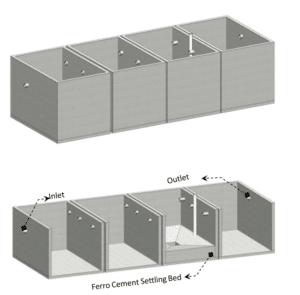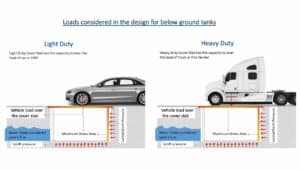PRECAST REINFORCED CONCRETE MONOLITHIC TANK
In the present scenario, water is becoming a very scarce commodity and we should take all measures to store and use it religiously. Considering all these, at VME, we are offering this product. The sizes of the tanks have been designed keeping in mind the need for erecting the tanks in congested areas and places with very less clearance. These tanks have also been priced in a manner that it is lower than the cost of the conventional cast-in-situ tanks.
RECTANGULAR TANK
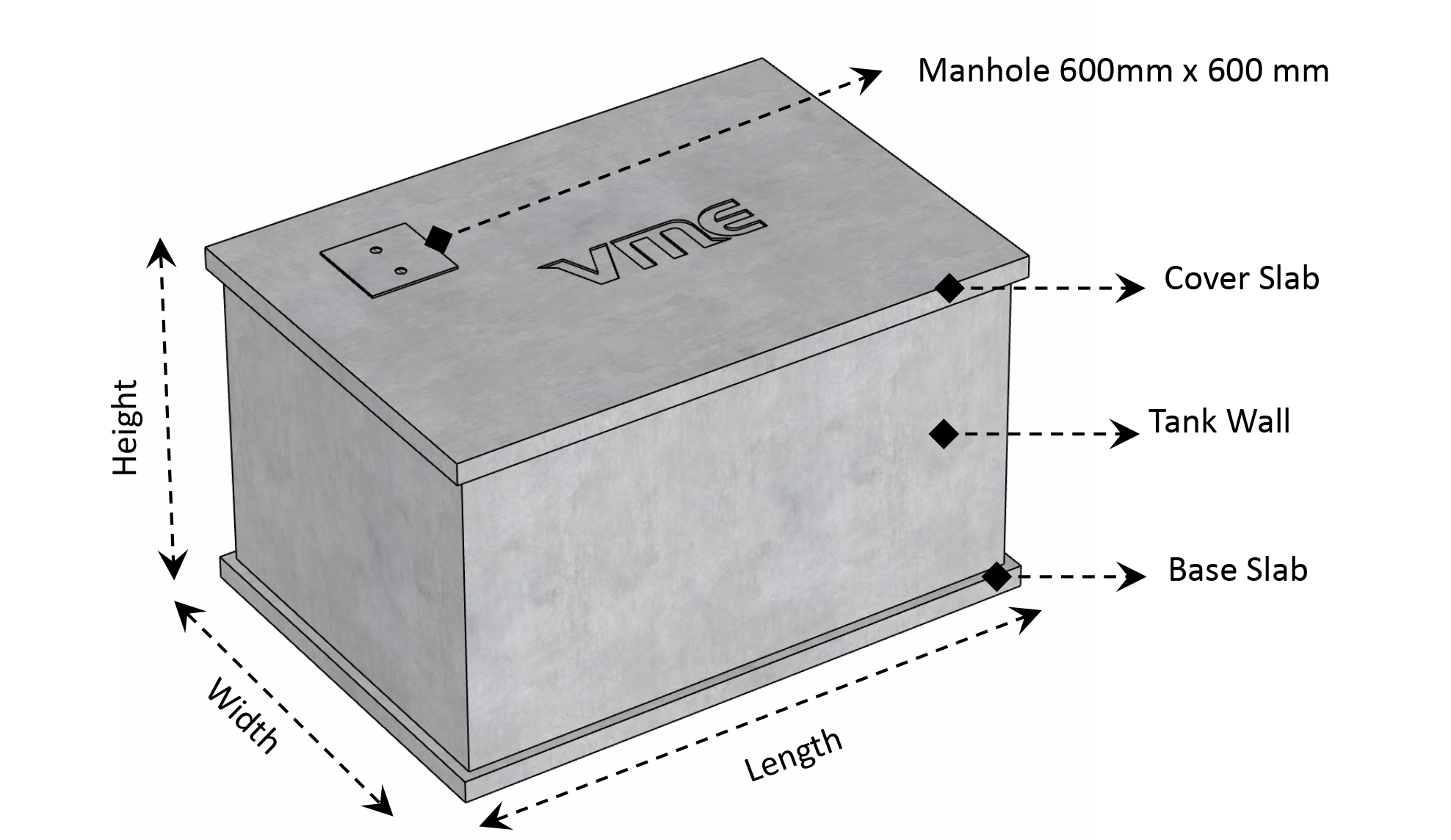
TANK GALLERY
- Technical Specification
- Suitable For
Materials
- Concrete : M40
- Steel : Fe500
Design Parameters
- The tanks are designed for Lateral Earth Pressure (Dry and Wet condition based on Water Table Level), Water Pressure from inside and outside (Tank full and empty condition), Live Load Surcharge (wherever applicable), Live Load over the Top cover slab (Vehicle Loads as per IRC Standard), Self-Weight of the structure and handling stresses (during lifting from mould, loading and unloading for transportation and erection).
- Designed as per the relevant codes like IS 456, IS 3370 (Part 1) : 2009 & IRC Codes.
- Individual Houses
- Villas
- Low to Medium Rise Apartments
- Industrial Usage

LOADS CONSIDERED IN THE DESIGN FOR BELOW GROUND TANKS

PRECAST TANKS
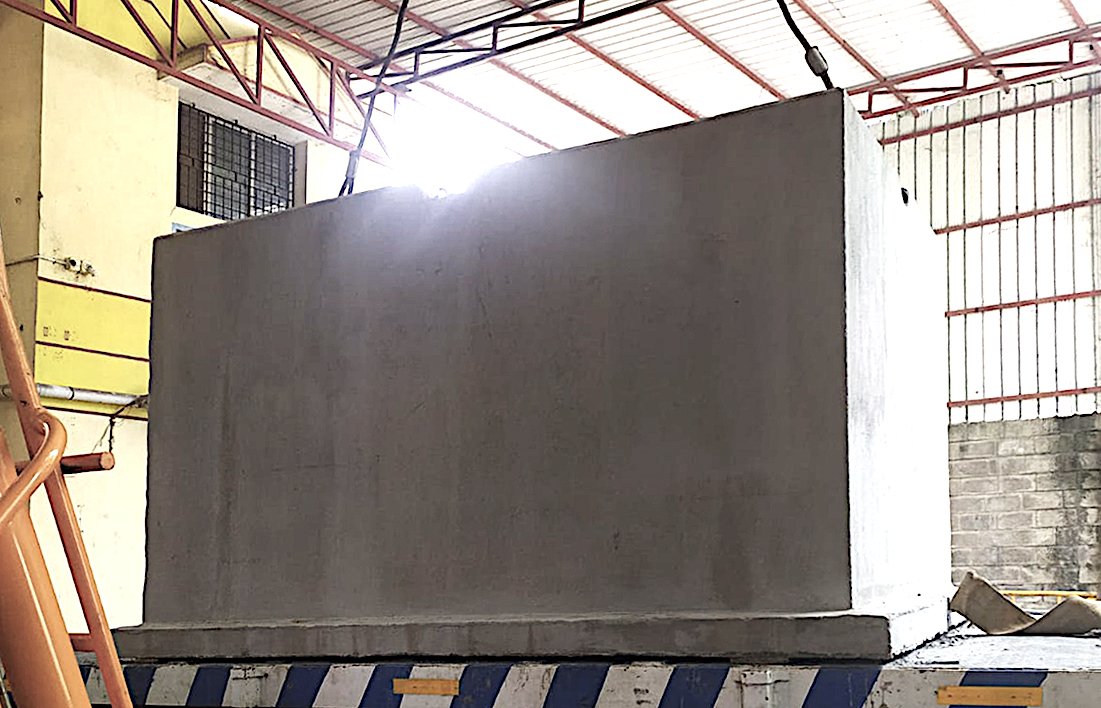
FACTORY MADE
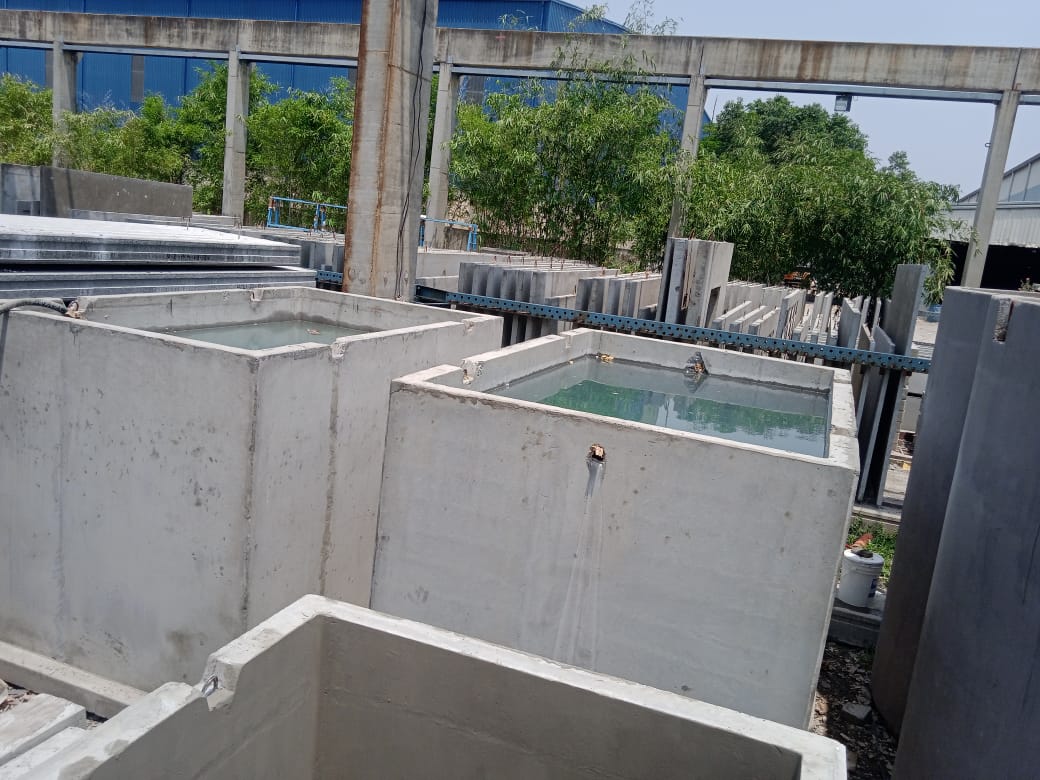
QUALITY / LEAKAGE CHECK
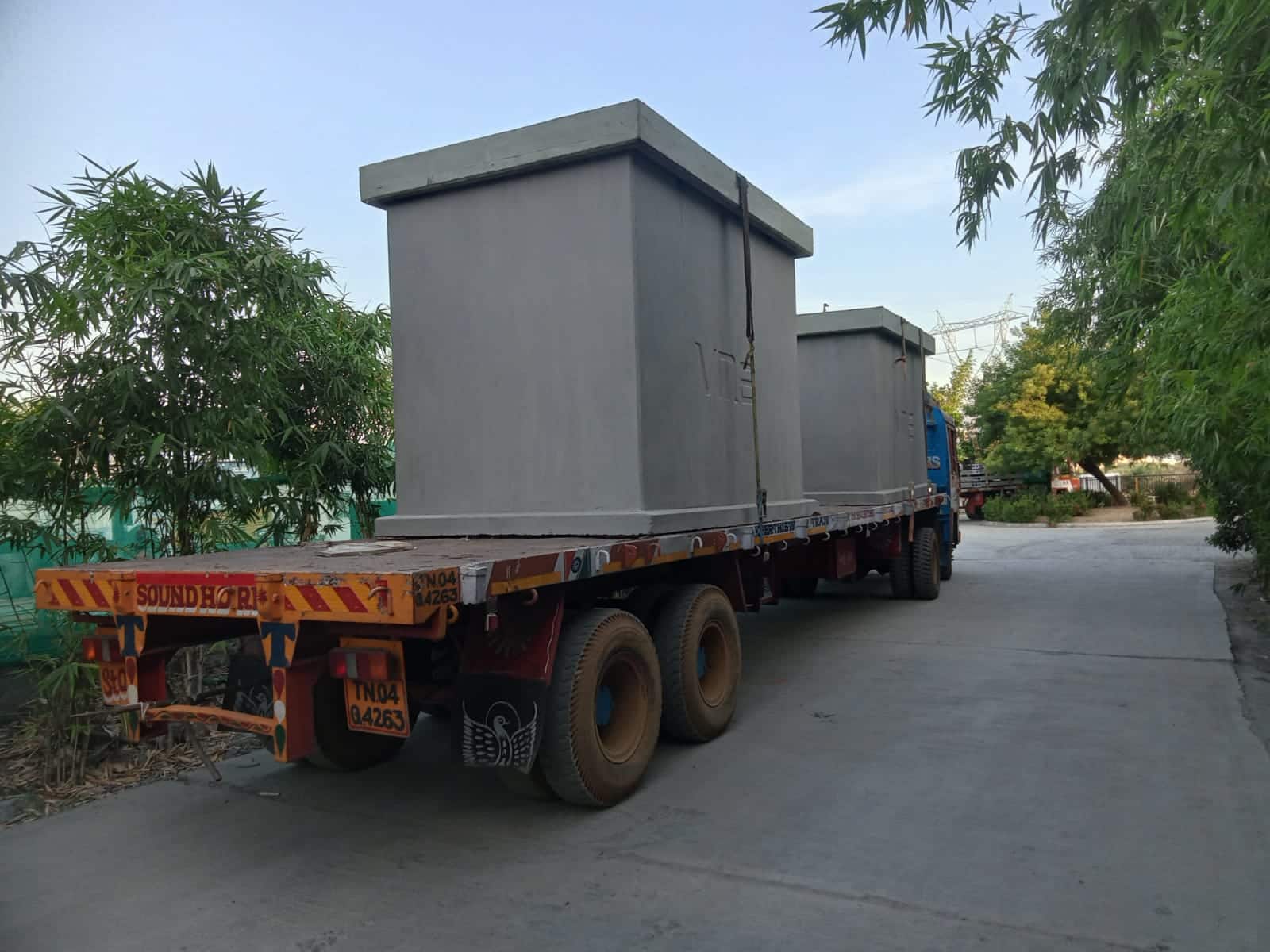
TRANSPORTATION TO SITE
WATER TANK - INSTALLATION IN SITE
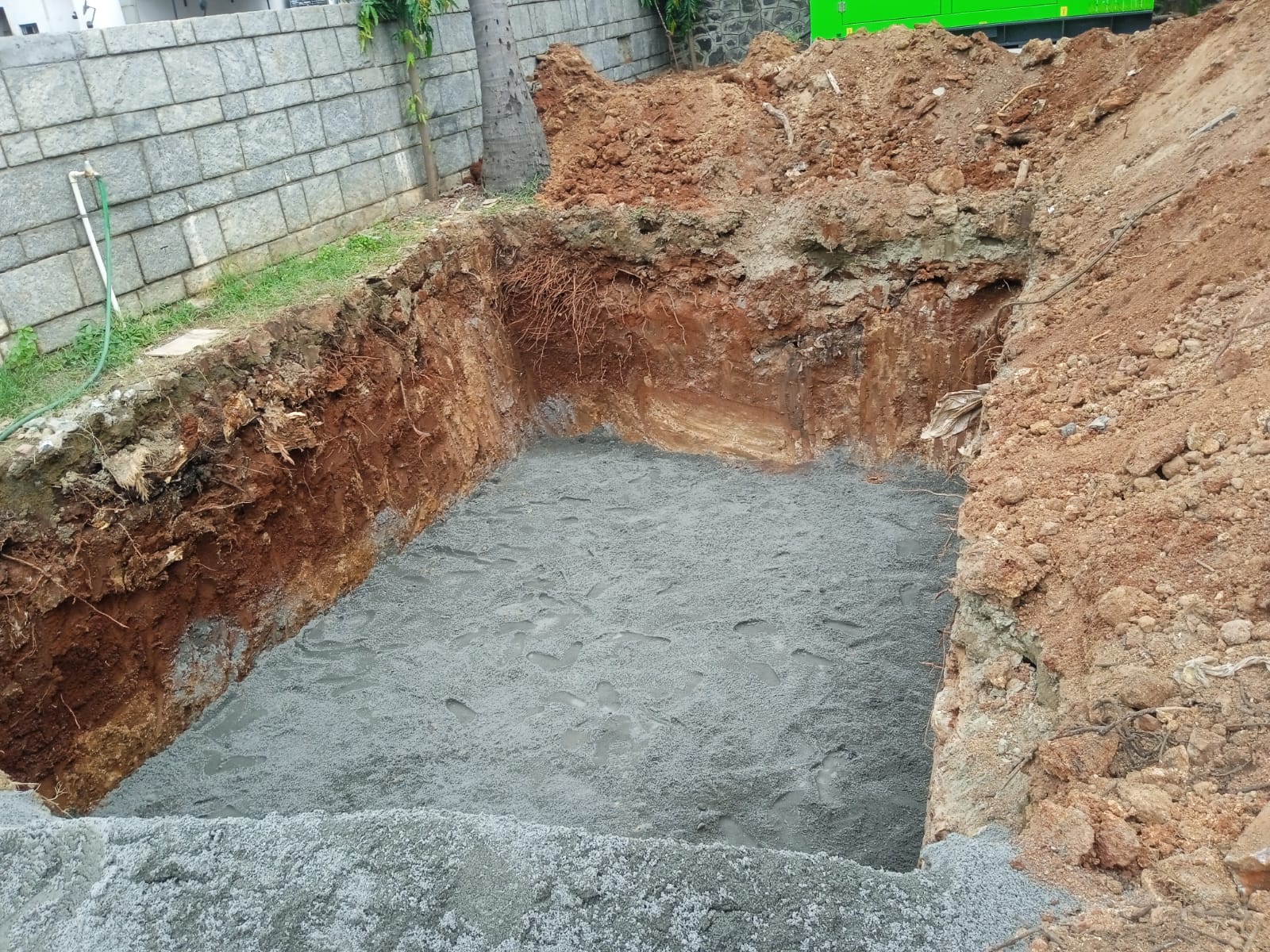
EXCAVATION & BASE PREPARATION WORK
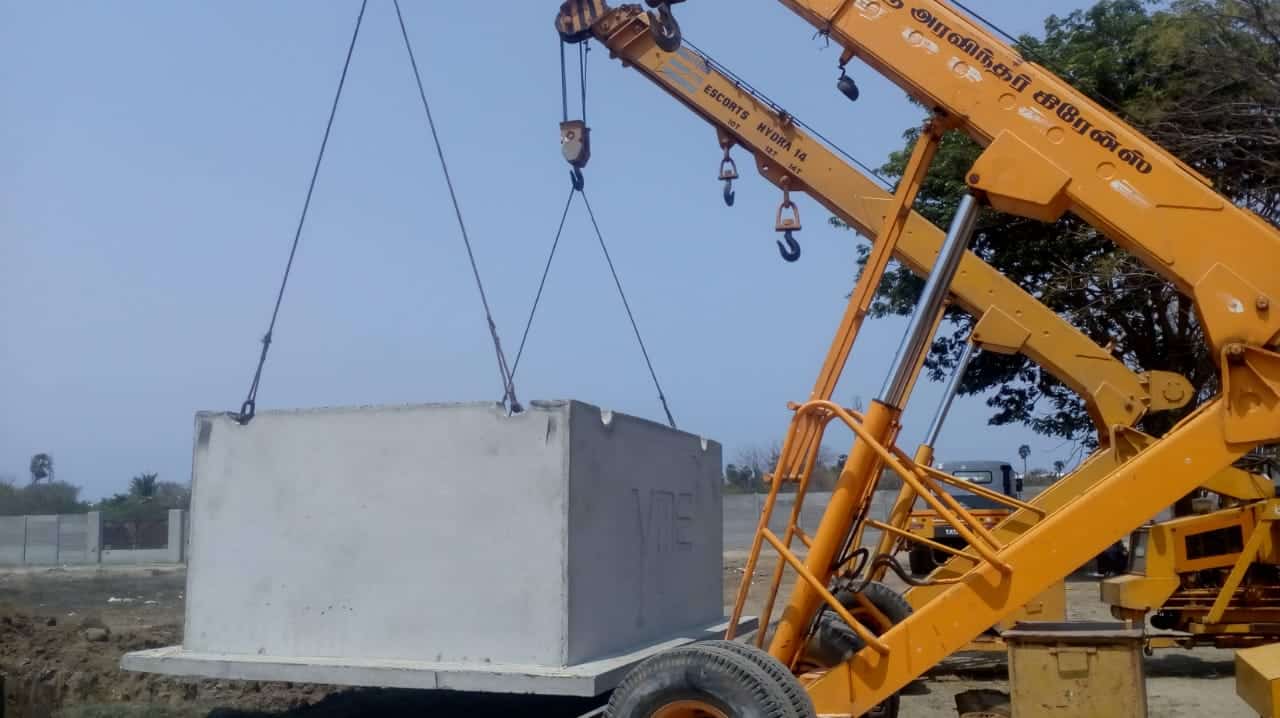
POSITIONING OF TANK
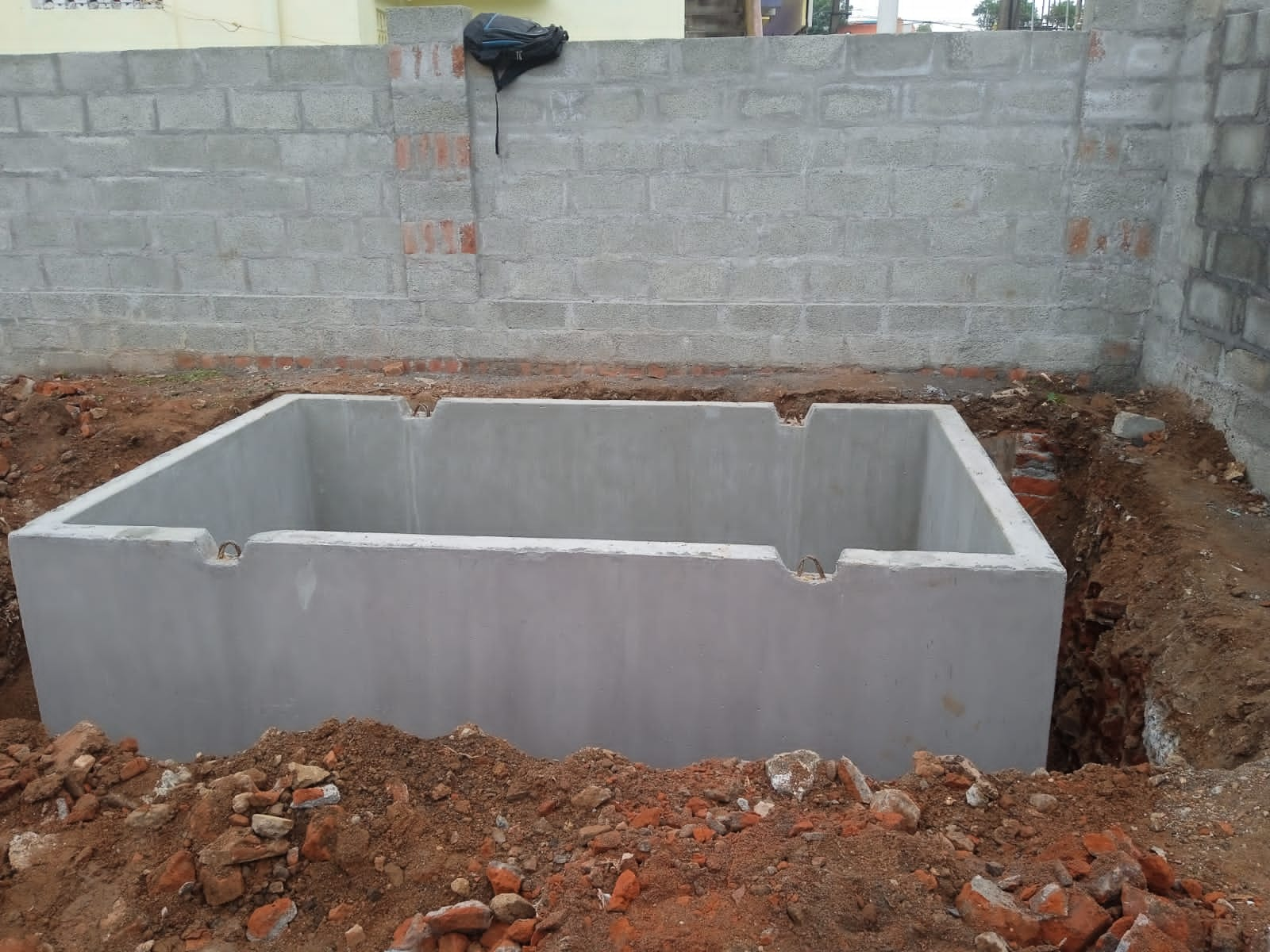
PLACING OF TANK
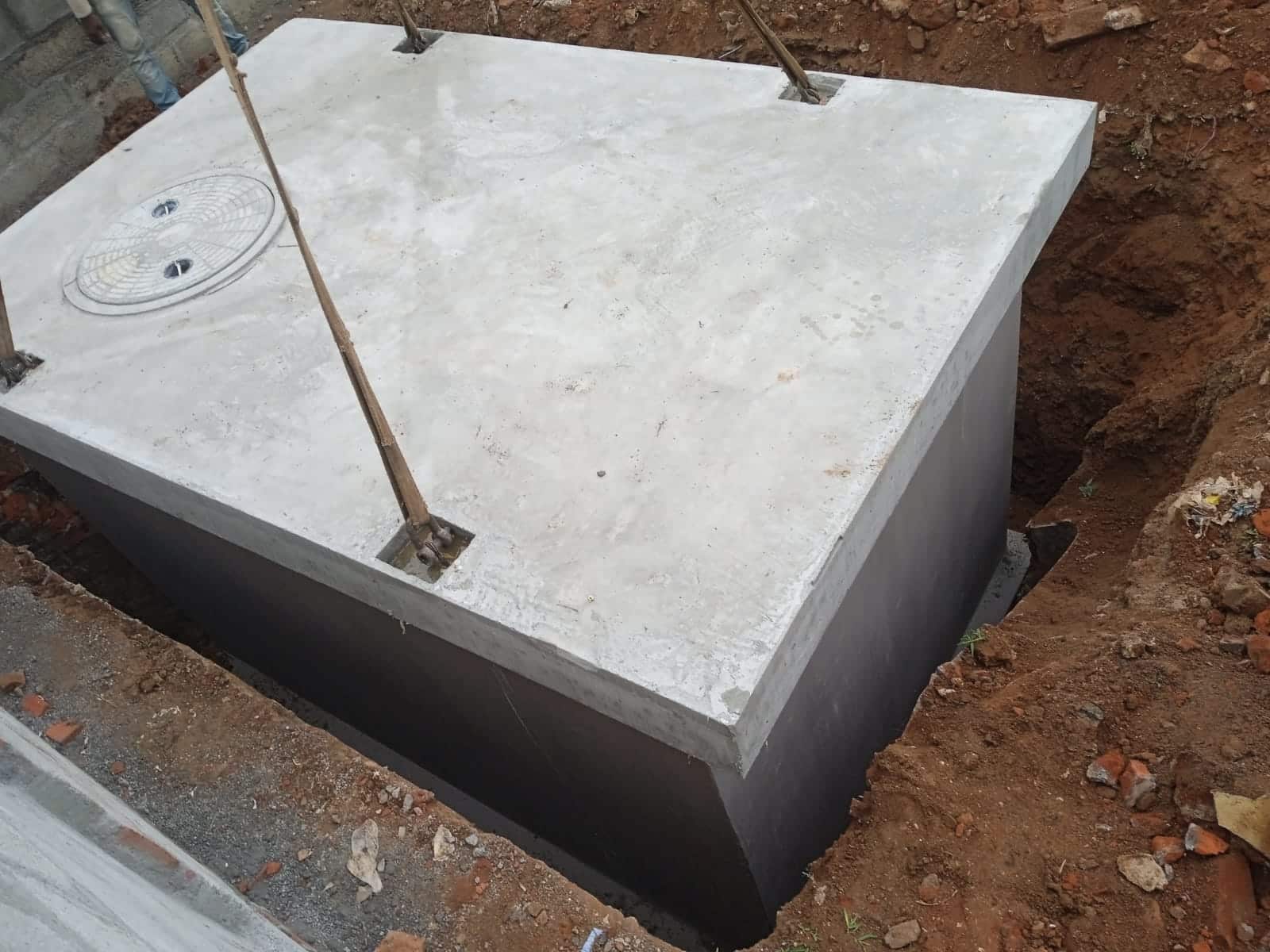
POSITIONING OF TANK COVER
- Dos and Don’ts
- Installation
- Clear all debris and obstructions from around the site.
- Ensure that all minimum setback distances from buildings and boundary fences / walls etc. are achieved.
- Provide access for excavator and concrete truck.
- Ensure that the necessary barricades are in place to make sure unauthorized persons cannot get close to the excavated area.
- Clearly mark the area to be excavated providing necessary allowances.
- Dig only the required cut out.
- Ensure that the pit has square corners and straight & vertical sides (i.e. the sides are at 90 degrees to each other and in straight & vertical) and has a level base.
- Angle the batter – provide slopes – according to the soil conditions to ensure the stability, if necessary.
- Ensure that the excavated soil is removed to a safe distance away from the excavation pit and place activities.
- Ensure that the base of the pit is smooth by removing any protruding objects, such as stones, boulders or rock, which may damage the tank.
- Remove water if any, from the excavated pit prior to the tank installation.
- Clean the pit and remove any loose materials before the installation of tank.
- Ensure that the tank will be positioned so that the riser pipes– used for access and connection to services – are in the most convenient location.
- Engage the correct machineries like cranes, loaders etc. with experienced operators.
- Do not commence excavation if rain is forecast for that day.
- Do not over excavate beyond the required length, breadth and depth allowing required clearances.
- Excavation has to be done based on the size of the tank, keeping an allowance of at least one feet all around for easy erection.
- Provide approximately 100 mm thick layer of washed sand or crusher dust available for placement at the base of the excavated pit prior to lowering the tank into the excavated pit. Ensure that the sand or crusher dust is quite level at the base of the pit.
- Unload the tank from truck using the appropriate and capable machineries and aim it to place directly into the pit slowly.
- This assists in preventing surface water from working its way around tank. It assists in preventing uplift of tank.
- Our concrete tanks do not need to be installed on a concrete base. However, if necessary, our tanks can be placed on a slab or over a Plain Cement Concrete surface.
- Ensure there is adequate access for the heavy equipment /machineries required for the installation. Access of greater than 3 meters is recommended but you should check this distance with the agency engaged for doing the excavation and installation of the tank.
- Excavation has to be done based on the size of the tank, keeping an allowance of at least one feet all around for easy erection.
- Provide approximately 100 mm thick layer of washed sand or crusher dust available for placement at the base of the excavated pit prior to lowering the tank into the excavated pit. Ensure that the sand or crusher dust is quite level at the base of the pit.
- Unload the tank from truck using the appropriate and capable machineries and aim it to place directly into the pit slowly.
- The pit must be protected from surface water flowing towards the pit.
- The excavated pit to be dewatered fully and kept dry during installation to avoid uplifting of tank.
- Our concrete tanks do not need to be installed on a concrete base generally. However, if necessary, our tanks can be placed on a slab or over a Plain Cement Concrete surface. If the soil is very poor like clayey soil, a layer of Base Course with Plain Cement Concrete for at least 100 mm thick to be laid over a 100 mm thick layer of sand / crusher dust.
- Ensure there is an adequate access for the heavy equipment / machineries required for the installation. An access width of greater than 3 meters is recommended but you should check this distance with the agency engaged for doing the excavation and installation of the tank.
FAQ
1. How deep does the excavation need to be if my scenario is different to the guidelines?
- This will depend on whether you are using the lid as a slab or how deep tank is being buried give us a call and we can assist with your requirements.
2. Where can the concrete tank installed?
- Beneath lawns, gardens, driveways, under garages, sheds, etc.
3. How do u ensure that there is no gap between the cover slab and the tank wall?
- We are giving a recess in the cover slab and in case if the tank is going to be buried into the soil, we can provide swellable bars, as shown in the figure for a tight water joint.
4. Can you shift the tank after installing?
- Yes. Tanks can be reinstalled after several years of installation. We have given hooks on the tank walls and the same can be used for shifting. Likewise in the cover slabs, the hooks are recessed and it will not project out, as shown in the.
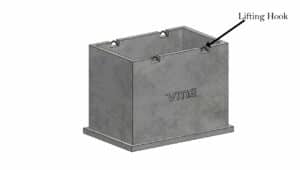
5. What is the provision given in the tank cover for lifting? Should we use any special lifting tackles for handling?
- Standard ropes, D shackles available with the crane vendors can be used
- (it is important to show the weight of the tanks and the crane capacities that are to be used for lifting each of the tanks and the D shackle capacities will also change)

6. Whether water proofing is done in the factory? If so what material is used? Whether it is a food grade material?
- Yes. Water proofing will be done in the factory. Water proofing Material GRADE : VBR 4503FG – FOOD GRADE ISOPHTHALIC RESIN .
- REFER THIS DOCUMENT
7. How do we connect battery of tanks?
- After placing the tank at site, then do core cutting at tank wall bottom for connection of 2 tank depending on your requirement. After core cutting insert the pipe then pack the gap all around the connection with Epoxy glue.

8.What is the material that will be filled between the tanks, when in case battery of tanks ?
- Gaps are to be filled by 6 mm aggregates and compacted properly.
9. How to make holes in the tank for connecting pipes?
- We supply tanks without any holes for pipe connections since they cannot be standardised and varies based on the clients’ requirements. Core cutting to be done on the wall as per the requirement, and gaps are to be filled by Epoxy Glue after fixing the pipes.
10. What materials should be used to close the gaps between the pipe and concrete surface?
- Gaps are to be filled by Epoxy Glue.
- Show a drawing and the materials that will be filled between the two, connection of sleeves etc
11. Whether water test is done in the factory – what does the IS code says?
- Test for Water Leakage is conducted in the factory itself by filling the water to the full capacity of the tank and keeping it for 24 to find the leakages if any.
12. How do we differentiate between heavy duty tank and medium duty tank?
- Differentiation of Heavy and Medium Duty Tanks to be done based on the thickness of the Base Slab of the Tanks as tabulated below. However all the custom Tanks are Heavy Duty only.
Sl.No | Duty type of Tank | Base slab Thickness (mm) |
1 | HEAVY | 150 |
2 | MEDIUM | 125 |
13. What is the meaning of heavy duty and medium duty tanks?
- In Medium Duty tank the entire structure including cover slab have the capacity to bear the load of LMV (Light Motor Vehicle) and the Heavy Duty tank the entire structure including cover slab has the capacity to bear the Heavy Vehicles loads as well as Live Load Surcharge as per IRC Standards.
14. Direct movements of the vehicle on top of the tank are allowed?
- Yes. Direct vehicle movements are allowed depending upon the Type of tanks wise Medium Duty and Heavy Duty.
15. Does the Precast tank need to be regularly cleaned?
- The Precast Tank may need to be periodically cleaned as an any other tank and this will depend on many local factors. Please consult a professional tank cleaner if your tank requires cleaning. What we do know is water tastes far better if stored underground (i,e) out of reach to the heat and light in a concrete enclosure.
16. Any permissions to be got for installing these tanks?
- You may need a permit for installing or using the tank from your local municipal authorities. There may require a minimum set back distance from buildings and boundary fences / walls. Your local water supply authority can also advise if you need any additional backflow prevention system and water meters to be installed to water mains, supplying water to the Tanks.
17. Cat – in - Situ RCC Tanks Vs Precast RCC Tanks : Why precast concrete tanks a better option?
- Precast Tanks are factory made using Higher Grade of Concrete and Steel with strict quality control measures.
- Much number of tanks are cast simultaneously at factory and thus saving the overall time of the project. It ensures speedy execution.
- Leak proof test is being done at factory itself and need not to do it again at site.
- Minimum man power is required at site for the erection.
- Since casting is done at factory, there is no need for collection of raw materials, dumping, mixing, using machineries for concreting etc. are at site.
- Since minimal activities are to be carried out at site, that too for a shorter duration, it is environmentally friendly and no noise and other kind of pollutions take place at site.
- Precast tanks ensure site excavation is never kept open for long period of time, therefore reducing inconveniences and minimizing the risk of accidents to both site workers and the public.
- Precast tanks can be installed as fully buried (even having earth or pavements over the top slab) or partially buried or on ground or above ground level as per the requirement of clients.
- Precast tanks are relocatable – they can be re-installed in some other location without causing any damage to the structure.
- Precast tanks are cost effective comparing to the quality, speed of execution, minimum activities at site, immediate usage and relocatable which are not possible in cast -in-situ construction.

